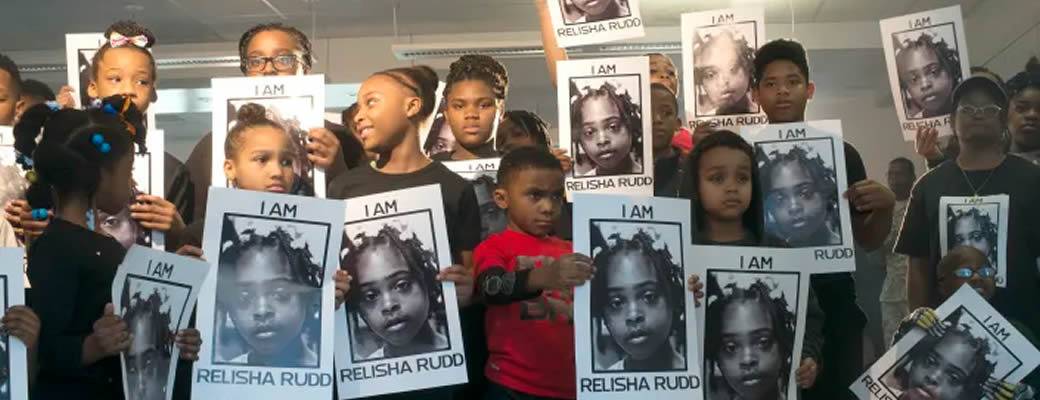Minnesota bill would create nation’s first office investigating missing Black women, girls
Yahoo!
Jayla Whitfield-Anderson
March 1, 2023
Minnesota state lawmakers are moving forward with a bill that would establish the nation’s first office to investigate cases of missing Black women and girls as tens of thousands of women of color remain missing in the U.S.
On Feb. 20, the Minnesota House voted 110-19 in favor of advancing House Bill HF55. “And it is on the fast track this year to be signed into law,” Rep. Ruth Richardson, DFL (Democratic-Farmer-Labor Party), the bill’s author, told Yahoo News. “This is part of the governor’s budget, and it’s one of his top priorities. So we are excited to be at a point where we can finally get this across the finish line.”
In previous years, similar bills passed in the Minnesota House but failed in the Senate. If the legislation is signed into law it would require the Bureau of Criminal Apprenticeship to operate a missing person alert program for Black women and girls.
The Office of Missing and Murdered Black Women and Girls would review missing persons and cold cases, and the first-of-its-kind project is expected to cost roughly $2.5 million.
In the United States, Black women only make up 13% of the female population but studies found that they make up 35% percent of missing women in the country. In 2020, during the pandemic, nearly 100,000 of the 250,000 women that went missing in the U.S were women of color.
Currently, “national statistics tell us that over 60,000 Black women are missing, and Black women are twice as likely than they appear to be victims of homicide,” Brittney Lewis, co-founder of Research in Action, told Yahoo News. “In the state of Minnesota, Black women are three times more likely to be murdered than white women in Minnesota.”
According to the state report completed by Minnesota’s Missing and Murdered Black Women and Girls Task Force, created in 2021, Black women are less likely to receive media attention when they go missing.
“What we’re finding is that people are disappearing for a number of reasons: sex trafficking of our young girls, increase in domestic violence, mental health reasons, and there are a lot of systemic reasons,” Natalie Wilson, co-founder of the Black and Missing Foundation, a nonprofit organization that brings awareness to missing people of color, told Yahoo News.
Wilson says she is working to bridge the gap so that all missing women have the same media attention and resources. “We’re trying to eliminate this barrier because what we’re finding oftentimes with our communities [is that] race, zip code, where you live, education, your economic status — all of these things are barriers,” Wilson said.
In 2016, when 21-year-old Keeshae Jacobs went missing in Richmond, Va., her mother said she faced barriers that made her feel like she was the only one searching for her child.
“Sometimes I feel like I’m the only one fighting here,” Toni Jacobs, Keeshae’s mother, told Yahoo News. “When I went to go file the police report that she was missing, it felt like the police officer didn’t believe me.”
“People [said] ‘oh she had a boyfriend. She just ran out. She was pregnant and she was scared to tell me.’ I mean, these are the first things that come to my mind and I’m like this is not fair,” Jacobs said.
According to experts, cases that involve missing Black women and girls stay open four times as long compared to other cases involving white people.
“People are taking them because they know they’re not getting attention,” Jacobs said. “I shouldn’t have to wait six years and I honestly believe I’m fighting by myself to bring my daughter home.”
In 2014, 8-year-old Relisha Rudd went missing in Washington, D.C, and still has not been found.
“If a white girl with blond hair and blue eyes goes missing every light comes on. [But] when a black girl or black woman goes missing you never hear about it,” Dr. Verna Price, founder of Girls Taking Action, a nonprofit organization in Minnesota that mentors young girls, told Yahoo News.
Experts say this is known as “‘missing white woman syndrome” — a term that refers to the unequal amount of coverage that white women receive compared to women of color.
In 2021, MSNBC host Joy Reid called the coverage of Gabby Petito a prime example of missing White woman syndrome. “Why not the same media attention when people of color go missing?” Reid asked.
According to Lynnette Grey Bull, founder of Not Our Native Daughters, “White people were more likely to have an article written while they were still missing,” she said on MSNBC.
Price says this is not just a problem in Minnesota as Black women and girls have been targeted nationwide.
“In this country, Black women since slavery have been dispensable and it is high time that we protect us,” Price said.
Richardson and supporters of the legislation said they are hopeful that the bill will pass and spur other states to take action on the issue.
“We believe that this is a blueprint for a national response,” Richardson said. “We are hoping that we can help to lead the way to ensure that Black women and girls are extended the same protection and the same support and the same energy that we see in coverage of other cases.”
Photo credit: Yahoo!, Marvin Joseph/The Washington Post via Getty Images

